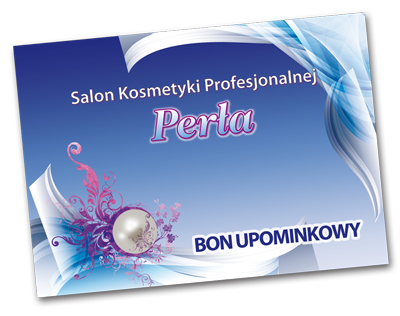Vita C Infusion Mikrodermabrazja - Twoje Klucze do Promiennej Skóry
What Research Has Shown the Benefits of High-Dose Vitmain C?
Have any clinical trials (research studies with people) of high-dose intravenous (IV) vitamin C been conducted?
Several studies of high-dose vitamin C in patients with cancer have been done in recent years, including the following:
Studies of vitamin C alone
- Intravenous (IV) vitamin C was studied in p atients with breast cancer who were treated with adjuvant chemotherapy and radiation therapy. The study found that patients who received IV vitamin C had better quality of life and fewer side effects than those who did not.
- A study of IV vitamin C and high doses of vitamin C taken by mouth was done in patients with cancer that could not be cured. Vitamin C was shown to be a safe and effective therapy to improve quality of life in these patients, including physical, mental, and emotional functions, symptoms of fatigue, nausea and vomiting, pain, and appetite loss.
- Vitamin C has been shown to be safe when given to healthy volunteers and cancer patients at doses up to 1.5 g/kg, while screening out patients with certain risk factors who should avoid vitamin C. Studies have also shown that Vitamin C levels in the blood are higher when taken by IV than when taken by mouth, and last for more than 4 hours.
Studies of vitamin C combined with other drugs
Studies of vitamin C combined with other drugs have shown mixed results:
- In a small study of 14 patients with advanced pancreatic cancer, IV vitamin C was given along with chemotherapy and treatment with a targeted therapy. Patients had very few bad side effects from the vitamin C treatment. The nine patients who completed the treatment had stable disease as shown by imaging studies.
- In another small study of 9 patients with advanced pancreatic cancer, patients were given chemotherapy in treatment cycles of once per week for 3 weeks along with IV vitamin C twice per week for 4 weeks. These patients had disease that did not progress for a period of months. The combined treatment was well tolerated and no serious side effects were reported.
- In a 2014 study of 27 patients with advanced ovarian cancer, treatment with chemotherapy alone was compared to chemotherapy along with IV vitamin C. Patients who received IV vitamin C along with chemotherapy had fewer serious side effects from the chemotherapy.
- Patients with refractory metastatic colorectal cancer or metastatic melanoma treated with IV vitamin C combined with other drugs had serious side effects, the disease got worse, and there was no anticancer effect. These studies were not controlled with a comparison group so it is unclear how much the IV vitamin C contributed to the side effects.
Rekindling vitamin C cancer therapy: oral vs intravenous administration
Based on studies pioneered by Mark Levine’s group at the NIH in the 2000s, the oral vitamin C doses used in the Mayo Clinic studies would have produced peak plasma concentration of less than 200 μM. In contrast, the same dose given intravenously, as used in the Pauling studies, would produce peak plasma concentrations of nearly 6 mM, more than 25 times higher. When given orally, vitamin C concentration in human plasma is tightly controlled by multiple mechanisms acting together: intestinal absorption, tissue accumulation, renal reabsorption and excretion, and potentially even the rate of utilization. However, when ascorbate is administered intravenously or intraperitoneally the tight controls are bypassed, and pharmacologic millimolar plasma concentrations of vitamin C can easily be achieved. For example, a phase I clinical study revealed that ascorbate concentrations could safely reach 25-30 mM with intravenous infusion of 100 g of vitamin C. In this study, plasma concentrations around 10 mM were sustained for at least 4 hours which, based on preclinical studies, is sufficient to kill cancer cells. Given the fact that cancer patients were only treated with vitamin C orally in the Mayo Clinic studies, the studies do not disprove high dose vitamin C’s efficacy as a cancer treatment.
More than half of colorectal cancers (CRCs) harbor activating mutations in KRAS or BRAF, yet those cancers are the most refractory to current targeted therapies. Our group and others showed that oncogenic mutations in KRAS or BRAF contribute to the Warburg effect and the addiction to glucose in part by upregulating a glucose transporter, GLUT1, that allows cancer cells to take up glucose efficiently. These data suggest a strategy for targeting KRAS or BRAF mutant cancer by exploiting the selective expression of GLUT1 and the metabolic liability that comes with increased reliance on glycolysis. Indeed, by targeting these unique features in these cancer cells, we recently showed that high dose vitamin C could selectively kill KRAS or BRAF mutant CRC cells.

Recenzje 69
- Od najwyższej oceny
- Od najniższej oceny
- Sortowanie domyślne
- Od najstarszych
Dodanych produktów: 4
Napisanych recenzji: 826
4 / 5
25 marca 2023, o 19:48
Nie wie, czy kupi ponownie
Używa produktu od: miesiąc
Wykorzystała: jedno opakowanie
Kupiony w: Drogeria Rossmann
Pięknie pachnie.
Kosmetyk pachnie cytrusowo, dosyć intensywnie. Kosmetyk jest żółtawy. Na skórze czuć drobinki, które masują moją skórę. Zauważyłam lekkie rozjaśnienie mojej skóry. Peeling stosuję regularnie eaz q tygodniu. Nie czuję podrażnienia ani uczulenia. Nie należy mocno masować skóry twarzy ponieważ może zaistnieć zaczerwienienie.
Dodanych produktów: 25
Napisanych recenzji: 62
5 / 5
6 lutego 2021, o 11:11
Nie wie, czy kupi ponownie
Używa produktu od: kilka miesięcy
Wykorzystała: jedno opakowanie
Kupiony w: Nie podano
Bardzo fajny
Kupiłam ten peeling z przypadku i pozytywnie mnie zaskoczył.
Opakowanie proste, wygodne w użyciu.
Zapach delikatny, przyjemny.
Nie spowodował u mnie uczulenia ani wysuszenia.
Skóra po użyciu jest zdecydowanie wygładzona, czuć że została wypeelingowana. Nie jest pozdzierana. Konsystencja lekkiego kremu z malutkimi drobinkami ledwo wyczuwalnymi pod palcami, nie spodziewałam się że tak fajnie zadziała.
ZALETY: opakowanie
działanie
zapach
Dodanych produktów: 0
Napisanych recenzji: 1173
5 / 5
14 listopada 2020, o 21:55
Używa produktu od: rok lub dłużej
Wykorzystała: jedno opakowanie
How Does High-Dose Vitamin C Help Treat Cancer?
High-dose vitamin C has been studied as a treatment for patients with cancer since the 1970s. A Scottish surgeon named Ewan Cameron worked with Nobel Prize-winning chemist Linus Pauling to study the possible benefits of vitamin C therapy in clinical trials of cancer patients in the late 1970s and early 1980's.
Surveys of healthcare practitioners at United States CAM conferences in recent years have shown that high-dose IV vitamin C is frequently given to patients as a treatment for infections, fatigue , and cancers, including breast cancer.
More than fifty years ago, a study suggested that cancer was a disease of changes in connective tissue caused by a lack of vitamin C. In the 1970's, it was proposed that high-dose ascorbic acid could help build resistance to disease or infection and possibly treat cancer.

Discussion
Vitamin C has been extensively applied in the treatment of viral infections, with studies revealing that patients with pneumonia and sepsis have low levels of vitamin C and elevated oxidative stress. [13] Owing to the direct inhibitory effect thereof on pathogens, there is sufficient evidence to suggest that vitamin C is effective in the treatment of pneumonia and infection. [14] Further, vitamin C has been shown to reduce the severity and duration of pneumonia, [15] while meta-analysis of 12 trials in 1766 patients calculated that vitamin C reduced ICU stay by an average of 8%. [16] Another meta-analysis found that vitamin C reduced the duration of mechanical ventilation in ICU patients. [17] Novel coronavirus pneumonia is a new respiratory disease caused by COVID-19, and is severely infectious. [18] Thus, vitamin C novel coronavirus pneumonia can also be applied to the treatment of patients.
Vitamin C can improve the resistance of white blood cells to viruses, has an antioxidant effect, and can induce interferon production in vivo. [4,19] In viral infections, vitamin C can attenuate pro-inflammatory response, enhance epithelial barrier function, increase alveolar fluid clearance rate, and prevent sepsis related coagulation abnormalities. [20] The implementation of high-dose vitamin C treatment can significantly reduce the demand for high-dose corticosteroids, antibiotics, and antiviral drugs, as these drugs may have the effects of immunosuppression, adrenal suppression and toxicity, complicating the course of the disease. [21] Combined with traditional Chinese medicine, Yali used a large dose of vitamin C (20 g/60 kg per day) to treat COVID-19. [22] As a result of Yali treatment, the symptoms of fatigue, cough, dry throat, and shortness of breath were significantly improved, and no adverse events occurred. [22] Zhang used a large dose of vitamin C (24 g/day) at the rate of 12 mL/h to treat patients with COVID-19, [23] with the results revealing that the PaO2/FiO2 of patients increased steadily, and the 28 day mortality of patients decreased significantly. [23] Therefore, high-dose vitamin C infusion may be a significantly effective therapeutic agent in COVID-19 treatment.
 U nas zapłacisz kartą
U nas zapłacisz kartą
